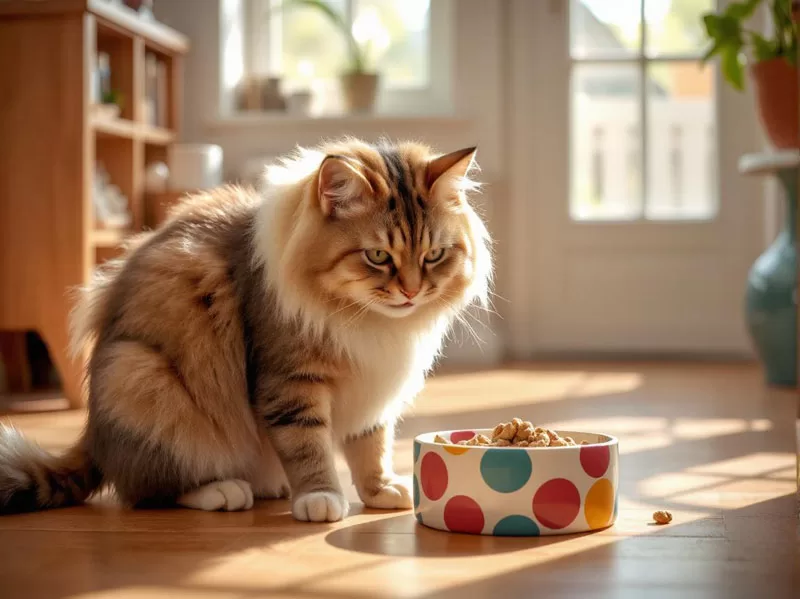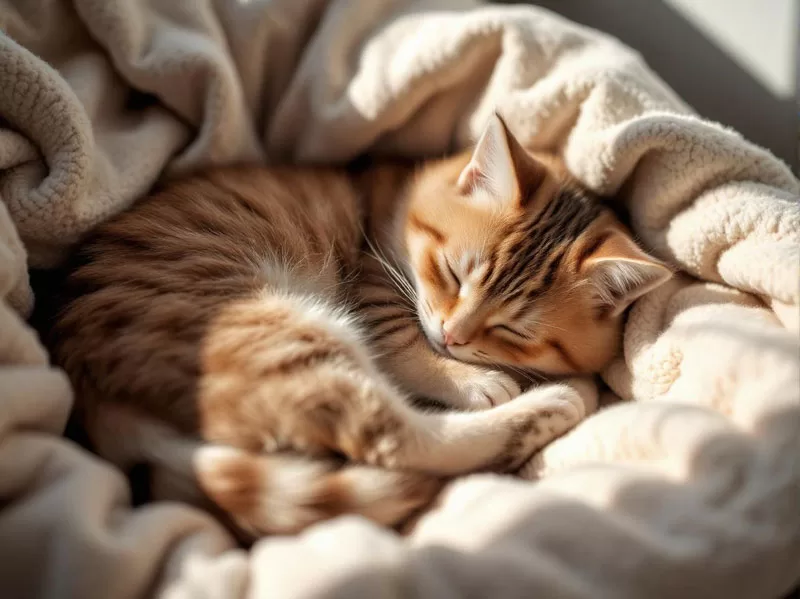
Offering your cat a healthy and balanced diet is crucial for their overall well-being. By recognizing these needs and making educated choices regarding their diet, you can foster a happier and healthier feline companion. In this detailed guide, we will explore various facets of feline nutrition, including essential nutrients, food choices, special dietary considerations, and tips for ensuring your cat thrives.
Understanding Your Cat’s Nutritional Requirements
When considering a raw cat food diet, it’s important to ensure it is properly balanced to meet your cat’s nutritional needs. Before selecting food for your cat, it’s crucial to understand what their bodies need to function optimally.
Essential Proteins
Proteins are fundamental for your cat’s health, as they provide essential amino acids vital for bodily functions. A primary amino acid that cats require is taurine, which is necessary for maintaining heart health, vision, and reproductive functions. Cats cannot synthesize taurine from plant-based sources, so a protein-rich diet with animal-based ingredients is crucial.
Healthy Fats
Fats are another important component of a cat’s diet, offering concentrated energy and essential fatty acids like omega-3 and omega-6. These fatty acids support healthy skin and a glossy coat, while also playing a role in reducing inflammation and promoting brain health. Animal fats and fish oils are excellent sources of these necessary fats.
Vitamins and Minerals
A variety of vitamins and minerals are required for your cat’s overall health. Key nutrients include vitamin A, which supports vision and immune function; vitamin D for calcium absorption; and minerals like calcium and phosphorus for strong bones and teeth. A diet that lacks these essential nutrients can lead to serious health problems over time.
Hydration Needs
Cats often do not drink enough water, which can lead to urinary issues and kidney problems. Since many cats have a low thirst drive, incorporating moisture into their diet is vital. Wet food is an excellent way to increase hydration, but you can also add water to dry kibble to encourage your cat to drink more.
Choosing Between Wet and Dry Cat Food
One of the most common questions cat owners have is whether to feed their cats wet or dry food. Each option has its advantages, and the best choice may depend on your cat’s individual needs and preferences.
Benefits of Wet Cat Food
Wet food typically contains higher moisture levels, which can aid in hydration and promote urinary tract health. It is generally more palatable for cats, making it an excellent option for picky eaters. Many wet foods also contain higher protein levels than dry food, which is beneficial for maintaining muscle mass.
Advantages of Dry Cat Food
Dry food is convenient for pet owners because it can be left out for free feeding without spoiling. It also has a longer shelf life, making it a practical choice for busy households. Additionally, the crunchy texture can help reduce plaque and tartar buildup on your cat’s teeth, promoting dental health. However, it’s essential to ensure your cat has access to fresh water at all times, especially when feeding dry food.
Combination Feeding
Many cat owners find success in combining wet and dry food in their cats’ diets. This approach allows you to take advantage of the benefits of both types of food while providing variety to your cat’s meals. Mixing wet and dry food can cater to your cat’s hydration needs and help prevent boredom with their diet.

Importance of Quality Ingredients
When selecting food for your cat, the quality of the ingredients is paramount. High-quality ingredients contribute to better health and overall well-being.
Animal-Based Proteins
Avoid products with vague terms like “meat meal” or “animal by-products,” which may contain lower-quality protein sources. Ensuring that your cat’s food has high-quality protein will help meet their nutritional requirements effectively.
Minimize Fillers
Many lower-quality cat foods include fillers like corn, soy, and wheat, which do not provide the essential nutrients your cat needs. Cats are not designed to digest plant-based proteins efficiently, so it’s best to select foods with minimal fillers. Instead, opt for foods that focus on meat and animal-derived ingredients.
Avoid Artificial Additives
Artificial preservatives, flavors, and colors can pose long-term health risks for your cat. Choose cat food that incorporates natural preservatives, like tocopherols (vitamin E) and vitamin C, to minimize your cat’s exposure to harmful additives. This approach can help prevent allergies and other potential health problems in the future.
The Raw Food Diet: Pros and Cons
In recent years, the raw food diet for cats has become increasingly popular, with advocates suggesting it reflects the natural diet of cats in the wild. However, this approach has its own set of advantages and disadvantages.
Potential Benefits
A raw diet typically includes uncooked meat, organs, and bones, offering cats a natural source of nutrients. Many advocates believe that raw feeding can lead to improved coat quality, increased energy, and better digestion. Additionally, a raw diet allows for customization, making it easier to address food allergies or sensitivities.
Risks Involved
Despite the purported benefits, raw feeding can present significant health risks. Raw meats can harbor harmful bacteria such as salmonella or E. coli, which can cause illness in both cats and humans. Furthermore, a raw diet may not be nutritionally balanced unless carefully planned, potentially leading to deficiencies in essential vitamins and minerals.
Consulting a Veterinarian
If you’re thinking about implementing a raw food diet for your cat, it’s essential to consult your veterinarian. They can assist you in creating a balanced diet that fulfills all your cat’s nutritional requirements while reducing potential health risks. A veterinarian can also guide you on safe handling and storage practices for raw food.

Preparing Homemade Cat Food
Some cat owners prefer to create homemade meals for their pets, believing it offers more control over ingredient quality. While homemade diets can be beneficial, they require careful planning.
Advantages of Homemade Diets
Homemade meals allow you to choose high-quality ingredients and avoid fillers and additives. Additionally, preparing meals at home can strengthen the bond between you and your cat as you take an active role in their health.
Challenges in Homemade Feeding
One of the main challenges of a homemade diet is ensuring it is nutritionally balanced. Cats have specific dietary requirements, and an unbalanced diet can lead to health problems over time. It’s essential to include all necessary nutrients, such as vitamins, minerals, and amino acids like taurine.
Consulting a Veterinary Nutritionist
If you choose to prepare homemade meals for your cat, it’s advisable to work with a veterinary nutritionist. They can help you formulate balanced recipes and ensure your cat receives all essential nutrients. This guidance can prevent common mistakes and health issues resulting from poor dietary choices.
Healthy Treats and Snacks for Your Cat
Treats are an excellent way to reward your cat, but it’s essential to choose healthy options and give them in moderation. Overindulgence can lead to obesity and nutritional imbalances.
Limit High-Calorie Treats
Many commercial cat treats are high in calories and may contain artificial ingredients that can be harmful over time. Opt for healthier alternatives, such as freeze-dried meat or fish treats, which provide protein without unnecessary additives. Always check the ingredient list to ensure the treats are made from high-quality sources.
Fruits and Vegetables as Snacks
While cats are obligate carnivores, some may enjoy the occasional vegetable or fruit snack. Small portions of cooked carrots, peas, or even pumpkin can be a healthy, low-calorie treat. However, avoid raw vegetables, as they can be challenging for cats to digest. Always introduce new foods gradually to monitor for any adverse reactions.
Making Homemade Treats
Homemade treats offer a way to control the ingredients and ensure your cat receives nutritious snacks. Simple recipes that include protein sources such as chicken, tuna, or salmon can be baked into healthy, high-protein treats. This can also be a fun bonding activity between you and your cat.
Special Dietary Needs for Cats
Certain cats may have specific dietary requirements due to health issues, age, or lifestyle. Recognizing these needs is essential to maintaining their health.
Senior Cat Nutrition
As cats grow older, their nutritional requirements evolve. Senior cats often benefit from diets that are softer and easier to chew and digest, with reduced fat content and increased protein levels to support muscle maintenance. Additionally, they may require a diet lower in phosphorus to promote kidney health, as older cats are more susceptible to kidney disease.
Weight Management for Obese Cats
Obesity is a prevalent issue among indoor cats and can result in significant health complications, such as diabetes and joint problems. If you notice your cat is carrying excess weight, it may be beneficial to switch to a weight management diet that is lower in calories while remaining nutritionally balanced. Additionally, incorporating regular exercise, controlling portion sizes, and keeping an eye on treat consumption can effectively help manage your cat’s weight.
Dietary Needs for Cats with Allergies
Some cats have food allergies or sensitivities that require special dietary considerations. Common allergens include chicken, beef, and grains. In such cases, it may be necessary to transition to a hypoallergenic or limited ingredient diet to prevent allergic reactions. Always consult your veterinarian before making dietary changes for an allergic cat.

Conclusion: Providing Optimal Nutrition for Your Cat
In conclusion, offering your cat a well-balanced and nutritious diet is essential for their overall well-being and joy. By recognizing their specific dietary needs and making thoughtful choices about their meals, you can promote a happier and healthier feline friend. Whether you opt for premium commercial food, a raw diet, or homemade options, always prioritize the nutritional quality of the ingredients and seek veterinary advice when necessary. By focusing on your cat’s dietary needs, you can help them flourish and lead a long, fulfilling life alongside you.
Leave a Reply